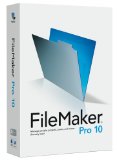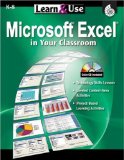|
Teach
them keyboarding skills EARLY!
 Many
children today are using the computer as early as three
or four years old to play games and practice drills. Unfortunately,
these same children are also learning “hunt and peck”
habits which makes it extremely hard later on to learn
proper keyboarding techniques. My recommendation is to
allow your child to only use the mouse during these early
years so they do not acquire these “hunt and peck” habits.
As soon as he is ready to learn keyboarding (eight years
old in most kids), put them on a typing program such as Mavis Beacon Teaches Typing Many
children today are using the computer as early as three
or four years old to play games and practice drills. Unfortunately,
these same children are also learning “hunt and peck”
habits which makes it extremely hard later on to learn
proper keyboarding techniques. My recommendation is to
allow your child to only use the mouse during these early
years so they do not acquire these “hunt and peck” habits.
As soon as he is ready to learn keyboarding (eight years
old in most kids), put them on a typing program such as Mavis Beacon Teaches Typing .The
goal is to get them to type at a minimum of 40 words per
minute (wpm) within a year or two. For a high school credit
with a grade of “A”,
they should type a minimum of 60 wpm at 90% accuracy or
better. .The
goal is to get them to type at a minimum of 40 words per
minute (wpm) within a year or two. For a high school credit
with a grade of “A”,
they should type a minimum of 60 wpm at 90% accuracy or
better.
I
highly recommend that you obtain a “skin” to
cover the keyboard (available at computer stores) or use
small pieces of masking tape to cover the letters on the
keys. Otherwise, they will be tempted to stop and look
for the letters. Require a minimum of 10 minutes per day
on keyboarding skills until they reach the desired speed
and accuracy.
Once
your child is typing using proper keyboarding techniques,
teach him to use all or some of the programs listed below.
Your child does not have type at 40 wpm to use these programs,
but force them to type properly by keeping the keys covered.
This will help them acquire the desired speed and accuracy.
Word
Processing
Most
computers come with Microsoft Office which includes Microsoft
Word®. If not, I recommend that you purchase it and
teach your child to use it. This program is used by a majority
of businesses and your child's ability to use it could
improve their employment prospects.
Teach
them to use Microsoft Office program by using any of
the following:
History
of Computer:
Multimedia
Kids
love doing multimedia on the computer. Multimedia software
combines graphics, text, sound, and video in one program.
This is a great way to get them to create projects related
to their studies. It will not only make the subject more fun
to learn but your child will actually remember more of what
they learned because they are using all of their senses. This
is very important for the audio and hands-on learner.
 The
program
that is most frequently used in schools is Powerpoint®. You
can learn to use these programs and other from: The
program
that is most frequently used in schools is Powerpoint®. You
can learn to use these programs and other from:
Database
Construction
 A
fun way to learn about database construction is for your child
to keep track of any collections you or your child has: personal
library books, baseball cards, collectible dolls, etc. Software
for database construction includes: A
fun way to learn about database construction is for your child
to keep track of any collections you or your child has: personal
library books, baseball cards, collectible dolls, etc. Software
for database construction includes:
Spreadsheets
 Spreadsheets
are used to keep budgets as well as charting, plotting, and
other statistical functions. Following are resources for teaching
the use of spreadsheets: Spreadsheets
are used to keep budgets as well as charting, plotting, and
other statistical functions. Following are resources for teaching
the use of spreadsheets:
KNOWLEDGE
ADVENTURE CRUNCHER 2.0 - a “student- and teacher-friendly
spreadsheet featuring six easy-to-follow tutorials and
20 new cross-curricular learning projects. Young students
learn how to use spreadsheets across all areas of the
curriculum as they organize, chart and evaluate all kinds
of information.” This is available used on Amazon.
Unfortunately, they have discontinued it. It you can
find a used copy that works on your computer, get it!
A fun way to learn for students in grades 3-8.
- a “student- and teacher-friendly
spreadsheet featuring six easy-to-follow tutorials and
20 new cross-curricular learning projects. Young students
learn how to use spreadsheets across all areas of the
curriculum as they organize, chart and evaluate all kinds
of information.” This is available used on Amazon.
Unfortunately, they have discontinued it. It you can
find a used copy that works on your computer, get it!
A fun way to learn for students in grades 3-8.
Excel
software can be purchased with Microsoft Office or
as a standalone.
The
best resources for learning this program are: Learn & Use
Microsoft Excel in Your Classroom, Lynda.com
and Visual Quickstart Guides.
How
to Use the Internet
To
prevent problems with the Internet, use an Internet provider
that uses a filtering system and put your computer in a
high-traffic room such as in the Family Room. Teach your
kids how to use the Internet and how to avoid dangers.
Recommended resources:
Scope
& Sequence of computer skills for K-8th. http://www.shelbycs.org/technology/scope_sequence.html
Back
to Curriculum Recommendations
. |